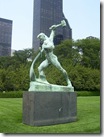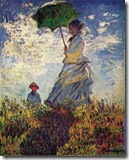As we continue through Isaiah, we come to another passage of hope in 4:2-6. There is some debate about just what the nature of the hope described here is. Those who work hard to deny the presence of the Messiah in the Old Testament may have an easier time with this one than with other passages. One professor I know takes most of the traditional “messianic” Isaiah passages to refer to the Messiah, but not this one. So if you don’t see what I see here, that doesn’t mean that we have forevermore parted ways. This passage is more difficult, for reasons I will demonstrate below.
It’s best to read the passage in full, even though the only clear reference to the Messiah is in verse 2.
Isaiah 4:2-6 (ESV) “In that day the branch of the Lord shall be beautiful and glorious, and the fruit of the land shall be the pride and honor of the survivors of Israel. 3 And he who is left in Zion and remains in Jerusalem will be called holy, everyone who has been recorded for life in Jerusalem, 4 when the Lord shall have washed away the filth of the daughters of Zion and cleansed the bloodstains of Jerusalem from its midst by a spirit of judgment and by a spirit of burning. 5 Then the Lord will create over the whole site of Mount Zion and over her assemblies a cloud by day, and smoke and the shining of a flaming fire by night; for over all the glory there will be a canopy. 6 There will be a booth for shade by day from the heat, and for a refuge and a shelter from the storm and rain.”
Let’s start with what is obvious and undisputed. First, the wicked people previously described (in chapters 1-3) are now made holy. Their “filth” is washed away and they are purified. Second, the Lord is present. The reference to the cloud, smoke, fire, glory, and canopy all recalls God’s glory with the Israelites in the wilderness (see Exodus 40:34-38). This is glorious enough, even if the Messiah is not mentioned in verse 2. Something radical has occurred such that the people are changed and God can remain in their midst. Those who are going into exile, those who are in exile, and those who have returned from exile all long for this reality.
Is something necessary to make this cleansing (of the people) and dwelling (of the Lord) possible? Isaiah will answer that very explicitly when he describes the Servant who “was pierced for our transgressions” (Isa 53:5-9). But is there a hint here? Does verse 2 speak about the Messiah?
In that day the branch of the Lord shall be beautiful and glorious, and the fruit of the land shall be the pride and honor of the survivors of Israel.
In my opinion, the “branch of the Lord” is the Messiah. But I am not sure that even the most astute listener/reader would have understood it when Isaiah first declared it. That is to say, there is nothing in the immediate context that makes it obvious that the branch is a person. When used earlier in the OT, the Hebrew word for “branch” is translated “vegetation” (Gen 19:25), “growth” (Ps 65:10), or “heads [of grain]” (Hos 8:7). And it could be understood here in the same sense – the vegetation will be beautiful and glorious. This is the view of the NET Bible. But this word can also be understood as “branch,” as is indisputable from Jer 23:5 and Zech 3:8 and 6:12. While I think it would have been unusual for this to be the “crops of the Lord” (note: it is not “fruit of the land” as in Num 13:20, but the “crops/branch of the Lord”), I think it might have been a legitimate view for a few years. That is, until Isaiah gave more revelations about the “stump” (Isa 6:13), the “shoot from the stump of Jesse” (Isa 11:1), and the “tender shoot” (Isa 53:2). Then, when Jeremiah comes along a hundred years later, he seems to intentionally develop this very idea. Note the many parallels:
Jeremiah 23:5-6 (ESV) “Behold, the days are coming, declares the Lord, when I will raise up for David a righteous Branch, and he shall reign as king and deal wisely, and shall execute justice and righteousness in the land. 6 In his days Judah will be saved, and Israel will dwell securely. And this is the name by which he will be called: ‘The Lord is our righteousness. ‘”
Jeremiah is talking about the same thing that Isaiah is. First, in both passages, there is explicit reference to this occurring in a future time. I don’t think they ‘re communicating the generic idea of “some time in the future,” but rather “at a specific time.” Second, the “branch of the Lord” is in Jeremiah a branch that the Lord raises up. (Note for the advanced: see how the NET interprets the two clauses of Isa 4:2 to stress the parallelism and obscure the contrast: “the crops given by the Lord/the produce of the land.” A better way to preserve the ambiguity in the Hebrew is “the crops of the Lord/the produce of the land.” Thus the careful reader sees a distinction between Lord and land which, especially later, becomes important. Unfortunately, the NET Bible typically adds debatable interpretive elements into the text of Scripture with the specific goal of precluding a messianic interpretation.) Third, both passages speak of righteousness in the land. Fourth, both passages speak of Israel being protected and living in safety. If I expanded the references to also include Isa 11 and 53, there would be even more obvious connections, but I am refraining from doing that in order to demonstrate that according to Jeremiah, the Messiah is in Isaiah 4. Jeremiah is not the only one to use the exact same word, “branch,” for the Messiah, for Zechariah does so twice (Zech 3:8; 6:12; cf. Jer 33:15).
Here’s the bottom line, and it’s a key concept for everything to come: Because Isaiah (and other prophets) use common terminology, it is possible to take a non-messianic interpretation if you fail or refuse to look at the near context (the verses before and after), the immediate context (the book), and the greater context (all of Israel’s prophets). In other words, Isaiah 4:2 alone can appear to be speaking about vegetation. But the more you “pull back,” the clearer it becomes that this is a subtle reference to the Messiah. It is subtle because 1) this is the first time the term “branch” is used in a messianic sense; 2) a non-messianic interpretation (“crops”) makes sense and does not jar the reader as being impossible; 3) it is Isaiah’s strategy to be subtle. This last point is very important, and I will develop it when we look at chapter 6 next time.
If you’ve ever watched an artist at work, the first few strokes on the canvas may not give you a clear sense of the portrait. You may in fact misinterpret the image initially. But as the artist expands the scene and fills in details, those early strokes are shown to be foundational to the whole. It’s very important to me that I am not changing the meaning of Isaiah 4, but rather I am understanding it in light of the finished portrait. Understand, this does not mean that I am reading something back into the text that was not there initially. Instead, I am recognizing what was there all along. Indeed, it is the Messiah who m
akes the people holy and who himself is God with us. To use another analogy, in this passage Isaiah draws the dots, and later he will connect them.



